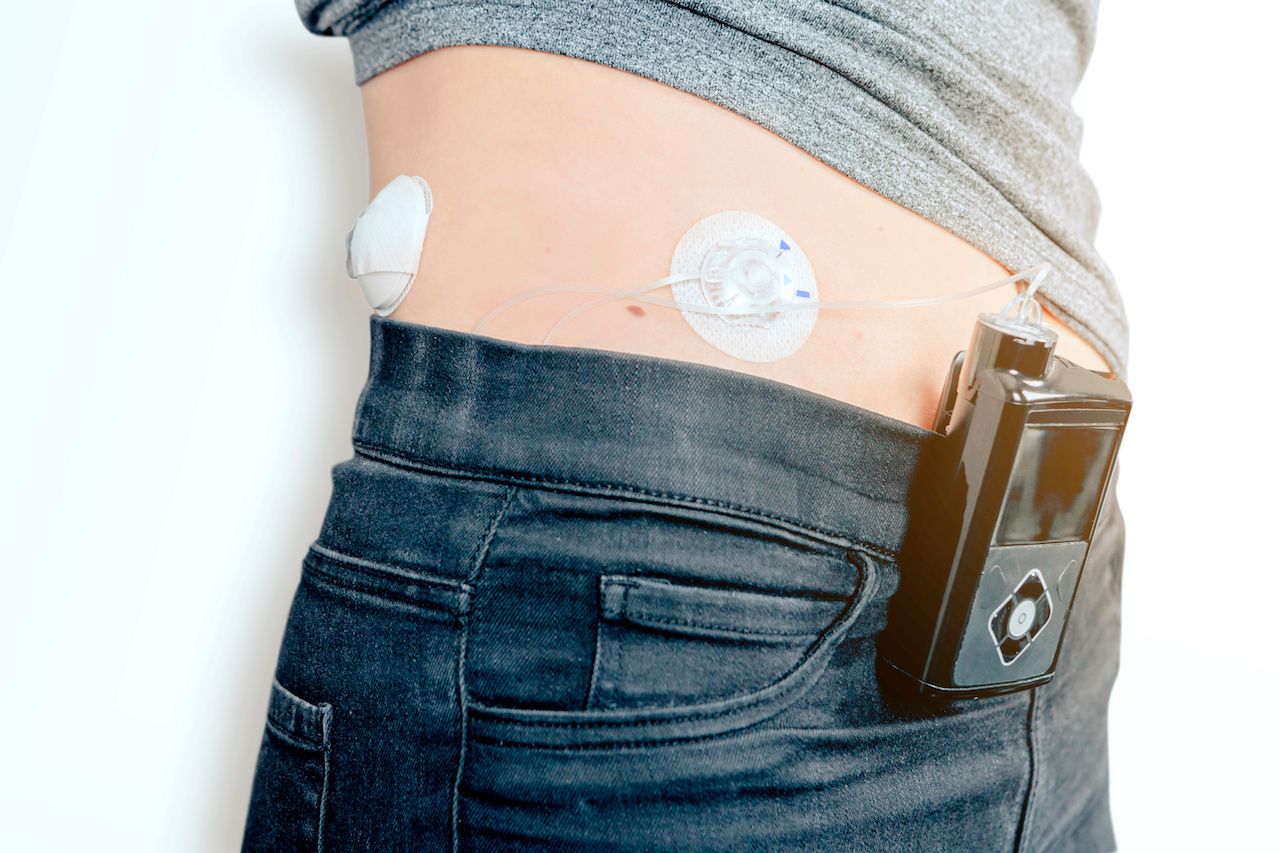News
Article
Virtual Insulin Pump Training Found Safe, Effective for Children With T1D
Author(s):
A retrospective study of over 100 pediatric and adolescent patients showed that providing virtual training for insulin pump use was both safe and effective.
Initiating insulin pumps virtually for younger patients with type 1 diabetes (T1D) may be a viable alternative to in-person initiation, helping expand use of the technology while also potentially closing racial gaps, suggest new study findings.1
The retrospective study of over 100 pediatric and adolescent patients showed that providing virtual training for insulin pump use was both safe and effective. The findings were published in Frontiers in Clinical Diabetes and Healthcare.
Insulin pump | Image credit: carlo - stock.adobe.com

“These exciting results provide support for a larger randomized controlled trial to demonstrate the non-inferiority of virtual insulin pump initiation versus in-person initiation,” explained the researchers. “This strategy, which takes the technology to the patient, instead of the patient going to the technology, represents a paradigm shift that could accelerate the adoption and retention of diabetes technology in geographically remote parts of the country, and among the minority populations in the US.”
Use of telehealth for care of various conditions, including diabetes, has been increasing in recent years, bringing both advantages and challenges to care. In an interview with The American Journal of Managed Care®, Matthew Crowley, MD, MHS, associate professor of medicine, Duke University School of Medicine, discussed how telehealth has been shown to be more effective in reducing hemoglobin A1c (HbA1c) and achieving diabetes control.2 Crowley also cited certain challenges with telehealth, including broadband access.
In this latest study, virtual training sessions consisted of 3 training sessions focused on how to use the pump safely with their existing continuous glucose monitor (CGM).1 Information provided to patients included a review of different scenarios that could happen while using the pump, such as hypoglycemia and ketosis, and demonstrations on how to use the pump. All who transitioned to the pump had used a CGM for managing their diabetes, along with multiple daily injections.
Among the 112 patients included in the study, 35% received the virtual training while 65% received training in the doctor’s office or a hospital. No significant differences in HbA1c were observed between the 2 groups of patients at baseline, 3 months, or 6 months. Throughout the 6 months, there were no reported cases of severe hypoglycemia or diabetic ketoacidosis.
Among the 39 patients receiving virtual training, 65.8% were White, 10.5% were Black, and 23.7% were another race. Among the 73 patients receiving in-office or hospital training, 54.8% were White, 15.1% were Black, and 30.1% were another race. No significant associations between race and HbA1c or time in range were observed. At 6 months, non-White patients had significantly increased HbA1c compared with White patients (7.45% [6.8-8.5] vs 6.9% [6.4-7.6], P = 0.007). Significant differences were not observed earlier.
“This study shows that diabetes technology closed the gap in glycemia between White and non-White children and adolescents in the short term, indicating that access to diabetes technology has the potential to bridge the gap in glycemic outcomes in the long term and reduce the healthcare burden of diabetes management in vulnerable populations,” described the researchers.“It also showed that both groups were astute in the understanding and use of diabetes technology. There were no significant differences in short-term complications such ashypoglycemia, hyperglycemia, and diabetic ketoacidosis between the White and non-White subjects, suggesting that diabetes technology is well utilized by both groups.”
Racial disparities in T1D outcomes among pediatric patients has been well documented, with research pointing to inferior diabetes control, more emergency department visits and hospitalizations, and less access to insulin pumps or CGMs among non-Hispanic Black children compared with their non-Hispanic White counterparts.3,4
References
1. Nwosu B, Pellizzari M, Pavlovic M, Ciron J, Talib R, Sohail R. Virtual insulin pump initiation is safe effective in children adolescents with type 1 diabetes. Front Clin Diabetes Healthc. Published online April 29, 2024.doi:10.3389/fcdhc.2024.1362627
2. Steinzor P. Dr Matthew Crowley discusses key advantages and challenges of telehealth among underserved populations. AJMC. September 24, 2023. Accessed May 22, 2024. https://www.ajmc.com/view/dr-matthew-crowley-discusses-key-advantages-and-challenges-of-telehealth-among-underserved-populations
3. Lipman TH, Smith JA, Patil O, Willi SM, Hawkes CP. Racial disparities in treatment and outcomes of children with type 1 diabetes. Pediatr Diabetes. 2021;22(2):241-248.
4. Majidi S, Ebekozien O, Noor N, et al. Inequities in health outcomes in children and adults with type 1 diabetes: Data from the T1D Exchange Quality Improvement Collaborative. Clin Diabetes. 2021;39(3):278-283.





